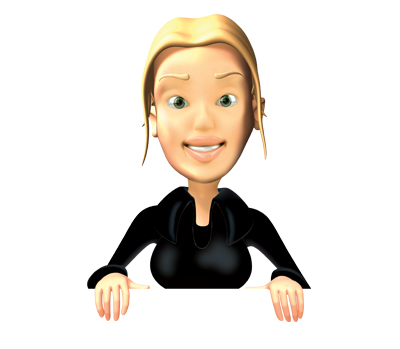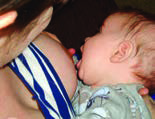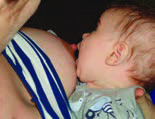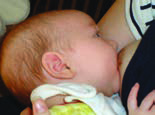Baby’s immediate needs are to feel safe and secure, and to be able to feed whenever hungry. Holding your baby close to feed and responding to their needs encourages healthy brain connections. Most of this development will occur within the first two years. Responsive parenting will enable your baby to reach their full potential, to be able to form good relationships and communicate well, giving them the best start in life.
Safety advice and sterilising
-
The cleaning and sterilising instructions are the same, whether you are using expressed breast milk or infant formula milk.
-
All the equipment you use for bottle feeding your baby should be washed in hot soapy water, rinsed and sterilised. You should keep sterilising your feeding equipment until your baby is at least six months old. However, continue to sterilise bottles until your baby is 12 months old.
-
Infections (like gastroenteritis) are rare, but, if they do occur, can be very serious.
Making up a bottle of formula milk
-
Wipe down the work surfaces you are going to use with a clean cloth.
-
Wash your hands with soap and water.
-
Read the instructions on the tin or packet to find out how much water and milk powder you will need.
-
Always fill the kettle with fresh water from the tap. Do not use bottled mineral water or artificially softened water.
-
Boil the kettle and leave it to cool for no longer than 30 minutes. It is important that the water is still hot, otherwise any bacteria in the milk powder may not be destroyed. Always take care, as at 70°C water is still hot enough to scald.
-
Always check the temperature before feeding it to your baby.
Call the Health Visiting Team Monday-Friday
OR 0161 716 2835 Heywood, Middleton and Rochdale Breastfeeding Support.
National helpline 0300 1000 212, 9.30am-9.30pm everyday.
Colostrum - The first milk
The first milk, called Colostrum, is highly protective. Staying close to your baby and feeding whenever they are hungry, showing feeding cues helps to make you baby feel secure and increases your milk supply.
It is fine to feed your baby when they need comforting, when your breasts are full or when you just want to sit and have a rest. It is not possible to overfeed a breastfed baby!
We encourage all mothers to provide colostrum to their baby at birth.
COVID-19 positive mothers can still breastfeed.
Breastfed babies have less ill health, infections, Diabetes, Skin problems, Asthma. They are also less likely to be obese, to need antibiotics or require hospital admissions.

-
How to tell your baby is having lots of milk:
-
Lots of wet heavy nappies - around six in 24 hours.
-
Dirty nappies, two to three soft stools daily until four to
six weeks, after which two to three per week.
-
Baby is content and settled during and after each feed.
-
During a feed, you can hear baby swallowing.
- Weight gain - checked by your health visitor.
Remember, your milk fulfils all of your baby’s needs for around six months. It also reduces the incidence of sudden infant death syndrome (SIDS). Cow’s milk should not be offered until your baby reaches one year, although it is suitable to use from six months in breakfast cereals. Breastfeeding should not be painful, speak to your Health Visiting Team or call Breastfeeding Support 0161 716 2835. National helpline 0300 1000 212, 9.30am-9.30pm everyday
Paced and Responsive Bottle Feeding
-
Feed your baby when they show signs of hunger/feeding cues; such as moving their head around, opening their mouth.
-
Hold baby in semi upright position, look into their eyes and hold them close.
-
Softly rub the teat across the baby’s top lip and gently insert it into their mouth. Keep the bottle horizontal and slightly tipped, to prevent the milk flowing too fast.
-
Watch baby for “full up cues” this is when they have had enough or need a rest. They may splay their fingers/toes, spill milk out of their mouth. Gently take the teat out of their mouth or tilt the milk away.
-
Your baby will know how much milk they need. Forcing your baby to finish a feed can be distressing for them and lead to overfeeding and other problems such as crying, colic and reflux.
1. Hold your baby’s body close.
2. Keep baby’s head and body in a straight line.
3. Keep your baby’s head free and let your baby’s head tilt back a little.
4. Start with nose to nipple to help them to attach correctly
Babies chin touches the breast first.
With their chin firmly touching and their nose clear and their mouth is wide open; there will be much more of the darker skin visible above your baby’s top lip than below their bottom lip.
Your baby’s cheeks will look full and rounded as they feed.
There are lots of different positions for breastfeeding. You just
need to check the following:
-
Are your baby’s head and body in a straight line?
If not, your baby might not be able to swallow easily.
-
Are you holding your baby close to you?
Support their neck, shoulders and back. They should be
able to tilt their head back easily.






